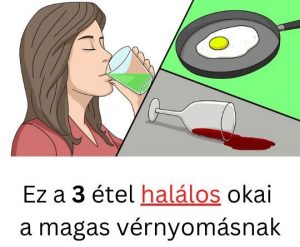The #1 Rated Blood Sugar Formula
What to know about pediatric vital signs

Most of the time high blood pressure doesn't cause symptoms. In rare cases, severe high blood pressure can cause headaches, blurry vision, dizziness, nosebleeds, a fluttering or racing heartbeat, and nausea. If your child has high blood pressure and gets any of these symptoms, get medical care right away.
A child is considered to have an elevated blood pressure if their blood pressure falls above the 90th percentile, and hypertension if they are above the 95th percentile. Over the age of 13, normal blood pressure ranges are the same for teenagers as they are for adults: Normal blood pressure: Less than 120/80 mm Hg.
Vital signs are measurements that reveal important information about how well the heart, lungs, and other important organs are functioning. They include measurements such as heart rate and blood pressure.
Heart rate
Heart rate is a measure of how many times the heart beats in a minute. There are a few ways to test heart rate. For example, a person can place a finger on a child’s pulse and count the total number of beats per minute (bpm). Alternatively, they can count the number of beats in 10 seconds and multiply this number by six. Heart rate tends to decrease as a child gets older. Adolescents have similar resting heart rates to healthy adults. Normal heart rates usually fall into the following ranges:| Age | Awake | Sleeping |
| Under 28 days old | 100–205 bpm | 90–160 bpm |
| 1–12 months old | 100–190 bpm | 90–160 bpm |
| 1–2 years old | 98–140 bpm | 80–120 bpm |
| 3–5 years old | 80–120 bpm | 65–100 bpm |
| 6–11 years old | 75–118 bpm | 58–90 bpm |
| 12–15 years old | 60–100 bpm | 50–90 bpm |
Blood pressure is a measure of how hard the heart is working. It measures the amount of pressure put on the veins and arteries by the blood that the heart is pumping.
Blood pressure levels tend to increase with height and weight, so larger children will have slightly higher blood pressures. Girls often have a slightly higher blood pressure than similarly sized boys. Pediatric blood pressure also increases with age.
Very high blood pressure could signal a heart health issue. Less frequently, low blood pressure may also indicate a problem. Low blood pressure can also be a sign of unusual bleeding or infection.
Systolic blood pressure refers to the top number of a blood pressure measurement, and this is always higher. Diastolic blood pressure is the bottom number.
Systolic blood pressure is the reading “on the beat.” This is when the heart muscle contracts in order to pump blood. Diastolic blood pressure is the reading between beats. This is when the heart muscle relaxes.
For most children, normal blood pressure measurements in millimeters of mercury are as follows:
| Age | Systolic | Diastolic |
| Newborn (under 1,000 grams [g]) | 39–59 | 16–36 |
| Newborn (over 1,000 g) | 60–76 | 31–45 |
| 0–1 month old | 67–84 | 35–53 |
| 1–12 months old | 72–104 | 37–56 |
| 1–2 years old | 86–106 | 42–63 |
| 3–5 years old | 89–112 | 46–72 |
| 6–9 years old | 97–115 | 57–76 |
| 10–11 years old | 102–120 | 61–80 |
| 12–15 years old | 110–131 | 64–83 |
Breathing rate
The rate at which a child breathes indicates how hard their body is working to inhale oxygen. Very rapid breathing may mean that a child is having trouble getting enough oxygen. Very slow breathing might indicate a neurological problem, such as a head injury. Doctors measure breathing rate in breaths per minute. To measure a breath, look for signs that a child has exhaled, such as air coming out of the nose. Count the total number of breaths per minute by monitoring their breathing for a minute or by counting the number of breaths in 10 seconds and multiplying the number by six. Typical breathing rates are as follows:| Age | Breaths per minute |
| 1–12 months old | 30–60 |
| 1–3 years old | 24–40 |
| 3–6 years old | 22–34 |
| 6–12 years old | 18–30 |
| 12–18 years old | 12–16 |
Symptoms of distress
Temporary changes in a child’s vital signs can be normal. Children’s blood pressures, breathing rates, and body temperatures often go up when they are anxious or very active. These vital signs tend to go down when a child relaxes or sleeps. Likewise, a minor deviation from the norm — such as a heart rate that is 5 bpm above normal — probably does not signal a problem if there are no other symptoms. It is helpful for parents and caregivers to know what is normal for their child, so that they can keep track of vital signs and recognize when there may be a problem. Typically, blood pressure is the last vital sign to change in a very sick child. So, normal blood pressure coupled with abnormal breathing or heart rate can still be a warning sign for a potential emergency. Some warning signs of distress in a child include:- a fever, which most healthcare providers define as a temperature over 100.4ºF (38ºC)
- grunting or making other noises when trying to breathe
- bleeding
- significant changes in multiple vital signs, such as an increase in heart rate and a drop in blood pressure
- breathing that stops for longer than 20 seconds
- chest breathing, especially in newborns and babies
- very fast breathing
- skin that is white, pale, or blue, especially under the nail beds or on the lips
- nostril flaring, especially in young babies






